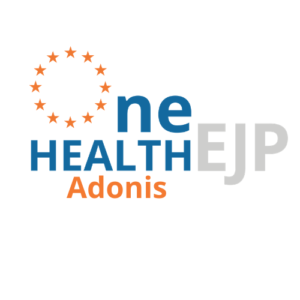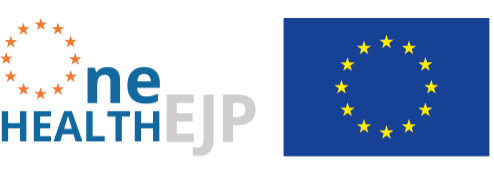Rua Rio Ave 1600, Carnide, Área Metropolitana de Lisboa, Portugal
Avenida da República, Oeiras e São Julião da Barra, Paço de Arcos e Caxias, Área Metropolitana de Lisboa, Portugal
Houtribweg 39, Lelystad, Flevoland, The Netherlands
Waterloo Road, London Borough of Lambeth, England, United Kingdom
Viale Regina Elena, Rome, Lazio, Italy
Vienna, Wien, Austria
Addlestone, England, United Kingdom
25 Rue du Docteur Roux, Paris 15e Arrondissement, Île-de-France, France
Artillerivej 5, Copenhagen, Region Hovedstaden, Denmark
Rue Juliette Wytsman - Juliette Wytsmanstraat 14, Ixelles - Elsene, Région de Bruxelles-Capitale - Brussels Hoofdstedelijk Gewest, Belgium
Avenida Puerta de Hierro, Madrid, Comunidad de Madrid, Spain
14 Rue Pierre et Marie Curie, Maisons-Alfort, Île-de-France, France
Aleja Partyzantów 57, Puławy, województwo lubelskie, Poland
Antonie van Leeuwenhoeklaan 9, De Bilt, Utrecht, The Netherlands

The Project #ADONIS
| Start: | 1 January 2020 |
| Duration: | 2.5 Years |
| Domain: | Foodborne Zoonoses |
| Keywords: | Salmonella, Genomic Epidemiology, Ecology, Public Health |
| Contact: | Eelco Franz (RIVM) |
ADONIS: Assessing Determinants of the Non-Decreasing Incidence of Salmonella
Salmonellosis remains the second most common zoonosis in humans in the EU despite a significantly long-term decreasing trend in human cases since 2008. In recent years this decreasing trend has levelled off. In laying hens, the prevalence of positive flocks for the target serovars, and especially for S. Enteritidis, has also increased after a long period of documented reduction.
Several hypotheses have been made, including more complete reporting and improvements in the surveillance of human salmonellosis, premature relaxation of Salmonella control measures at primary production, possible deficiencies in the enforcement of existing control measures and sensitivity of statutory sampling programmes, and changed/increased exposure patterns.
The ADONIS project aimed to identify determinants underlying the stagnation/reversal of the decreasing trend in Salmonella Enteritidis incidence in humans and poultry in the EU. We applied a cross-sectorial approach where we investigated possible explanatory factors at the levels of primary production, epidemiology/exposure, and the pathogen itself.
At the primary production level, the project evaluated possible changes in flock management and possible insufficiencies in control measures implemented to date in poultry farms related to the implementation of vaccination programmes as well as the application of strict farm hygiene controls and sensitivity of the statutory sampling implemented in commercial flocks.
At the public health level, this project evaluated national surveillance systems for S. Enteritidis in humans, assess changes over time regarding epidemiological characteristics, and calculate the total reservoir output exposure loads.
At the pathogen level, we assessed whether the recent plateau in salmonellosis incidence in Europe could be related to the genetic variation of the Salmonella bacterium, primarily S. Enteritidis, such as the emergence or clonal expansion of specific bacterial strains with increased fitness in the form of e.g. increased bacterial division, increased virulence or antibiotic resistance. Finally, the data and information gathered was ranked and prioritised by a Multi-Criteria Decision Analysis (MCDA) modelling.
Project Outcomes
The objective of the ADONIS project was to identify determinants underlying the stagnation/reversal of the decreasing trend in Salmonella Enteritidis incidence in humans and poultry in the EU. This will deliver stakeholders and policy makers with anchor points to at least prevent a continued stagnation or even a re-establishment a decreasing trend in Salmonella incidence in humans and poultry.
On the primary production was also concluded that Salmonella within the Control Programs only few audits confirm full congruence with the legal requirements, with room for improvement regarding sampling, laboratory testing, reporting, restrictions and measures taken along the food chain (including outbreak analyses), as well as evaluation of NSCPs progress. The auditing might be intensified and improved with clear criteria for MS selection linked with the national scale of poultry production, meeting of community targets, and clear legal criteria for audited areas (i.e. self-evaluation checklist).
On the epidemiology level it was shown with proper statistical methodology that in the Netherlands and Belgium the incidence of S. Enteritidis shows an upward trend from 2015 onwards. The increased occurrence of potential outbreaks and invasive infections since 2015 might partially explain this observed reversal of the trend. In addition, on a EU level we noticed a significant increase in the number of outbreaks between 2015 and 2019, which was mainly caused by an increase in Eastern Europe related to S. Enteritidis (and eggs). Finally, we established that neither changes in surveillance in systems neither changes in exposure of the population to Salmonella are likely to explain the observed changes in the S. Enteritidis epidemiology.
On the pathogen level the genomic clustering revealed the split of the European Enteritidis into roughly two major clades with little structuring by collection date, source, or country of isolation. No strong evidence of a split between populations of S. Enteritidis before and after the stagnating trend in Europe. Our comparative genomic analysis of S. Enteritidis isolates revealed the wide-spread presence of a large international group of plasmids carrying β-lactam resistance genes in humans, animals and food. We also detected prophages which are specific for some genetic clusters, although the impact of this on the phenotype/virulence is not clear yet. In-vivo virulence assays showed an emergence in recent years of more virulent strains of Enteritidis in Europe. These could be a contributing factor in explaining the stagnation on the decreasing trend in human salmonellosis due to Enteritidis, however these more virulent strains appear randomly in otherwise closely related genomic clusters, and can therefore not be responsible for the major change in the Enteritidis decline observed.
Finally, a multi-criteria decision analysis (MCDA) showed the rankings of the potential determinants and options for intervention for the stagnating S. Enteritidis trend in Europe pointed consistently to the level of poultry health and production. Salmonella control activities in poultry in Europe are harmonised across countries for many years, but the results of this study suggest that further improvements may be necessary for some European countries.
In summary, we conclude that more efforts should be undertaken to control Salmonella in the EU in order to re-establish a decreasing trend in incidence. We determined that the most relevant anchorpoints for the rankings of the potential determinants and options for intervention for the stagnating S. Enteritidis trend in Europe consistently pointed to the level of poultry health and production.
Project Assets
Samper-Cativiela, C., Prieto, M. E., Collado, S., De Frutos, C., Branscum, A.J., Saez, J.L., Alvarez, J. (2023). Risk Factors for Salmonella Detection in Commercial Layer Flocks in Spain. Animals. 13(20), 3181. DOI: https://doi.org/10.3390/ani13203181
Chanamé Pinedo, L., Van Goethem, N., Mallioris, P., Pacholewicz, E., Pijnacker, R., Franz, E., & Mughini-Gras, L. (2023). Assessing potential determinants of the stagnating trend in Salmonella Enteritidis human infections in Europe and options for intervention: A multi-criteria decision analysis. One Health. 16, 100535. DOI: https://doi.org/10.1016/j.onehlt.2023.100535
Pacholewicz, E., Wisselink, H.J., Koene, M.G.J., van der Most, M., Gonzales, J.L. (2023). Environmental Sampling Methods for Detection of Salmonella Infections in Laying Hens: A Systematic Review and Meta-Analysis. Microorganisms. 11, 2100. DOI: https://doi.org/10.3390/microorganisms11082100
Chanamé-Pinedo, L., Franz, E., Beld, M., Veldman, K., Pijnacker, R., & Mughini-Gras, L. (2023). Increased antimicrobial resistance among non-typhoidal salmonella infections in international travellers returning to the Netherlands. Journal of Travel Medicine. taad079. DOI: https://doi.org/10.1093/jtm/taad079 & Zenodo: https://doi.org/10.5281/zenodo.8347887
Chanamé Pinedo, L., Mughini Gras, L., Franz, E., Hald, T., Pires, S. (2022). Sources and trends of human salmonellosis in Europe, 2015–2019: An analysis of outbreak data. International Journal of Food Microbiology. 379, 109850. DOI: https://doi.org/10.1016/j.ijfoodmicro.2022.109850
Chanamé Pinedo, L., Franz, E., van den Beld, M., Van Goethem, N., Mattheus, W., Veldman, K., Bosch, T., Mughini-Gras, L., & Pijnacker, R. (2022). Changing epidemiology of Salmonella Enteritidis human infections in the Netherlands and Belgium, 2006 to 2019: a registry-based population study. Euro Surveillance. 27(38), 2101174. DOI: https://doi.org/10.2807/1560-7917.ES.2022.27.38.2101174
Samper-Cativiela, C., Diéguez-Roda, B., Trigo da Roza, F., Ugarte-Ruiz, M., Elnekave, E., Lim, S., Hernández, M., Abad, D., Collado, S., Sáez, J. L., de Frutos, C., Agüero, M., Moreno, M. Á., Escudero, J. A., & Álvarez, J. (2022). Genomic characterization of multidrug-resistant Salmonella serovar Kentucky ST198 isolated in poultry flocks in Spain (2011-2017). Microbial Genomics.8(3), 000773. DOI: https://doi.org/10.5281/zenodo.7082555
Mughini-Gras, L., Chanamé Pinedo, L., Pijnacker, R., Van den Beld, M., Wit, B., Veldman, K., Bosch, T., Franz, E. (2021). Impact of the COVID-19 pandemic on human salmonellosis in the Netherlands. Epidemiology and Infection, 149, E254. DOI: https://doi.org/10.1017/S0950268821002557
Van Goethem N., Van Den Bossche A., Ceyssens P. J., Lajot A., Coucke W., Vernelen K., Roosens N. H. C., De Keersmaecker S. C. J., Van Cauteren D., Mattheus W. (2021) Coverage of the national surveillance system for human Salmonella infections, Belgium, 2016-2020. PLoS ONE 16(8): e0256820. DOI: https://doi.org/10.1371/journal.pone.0256820



